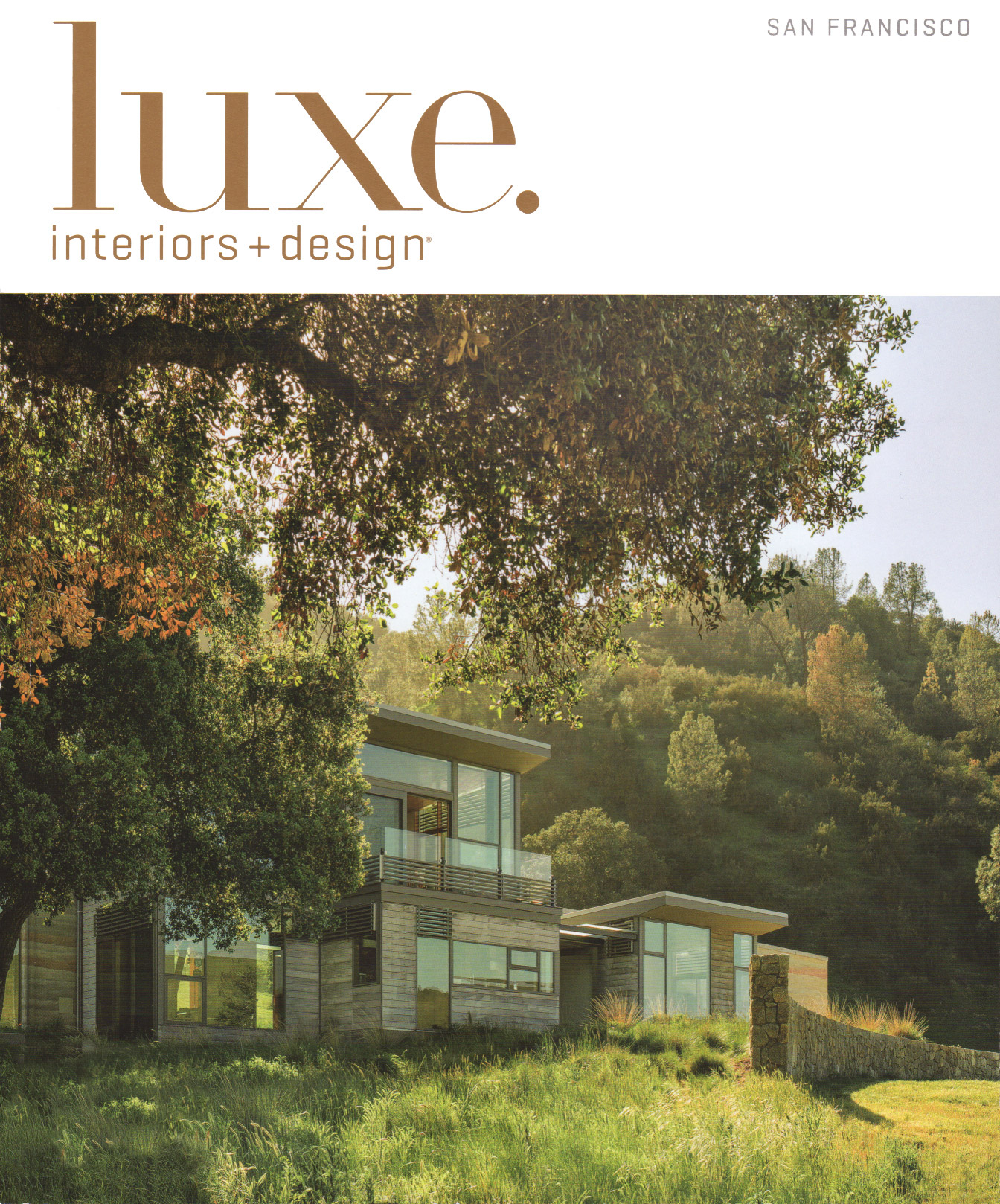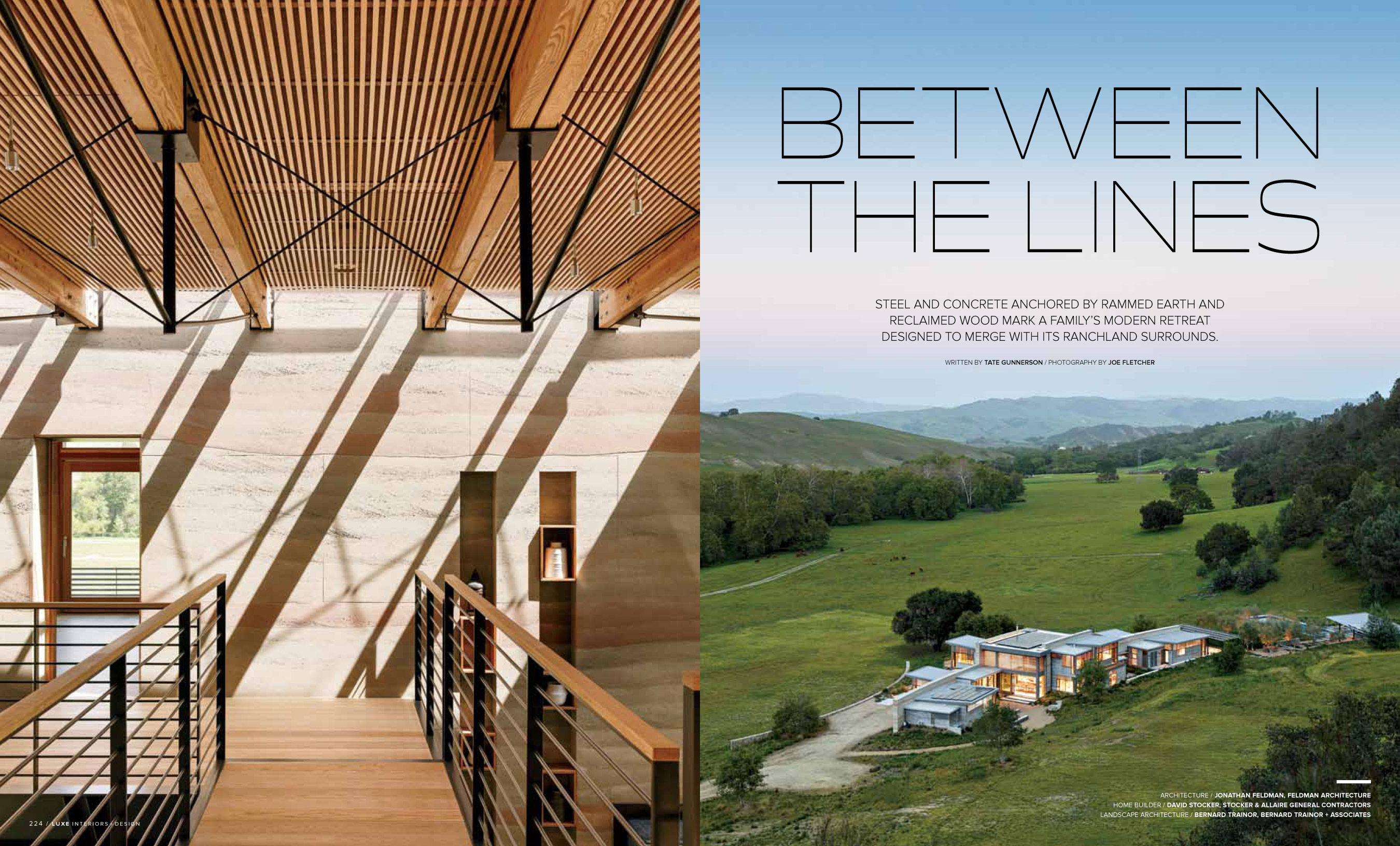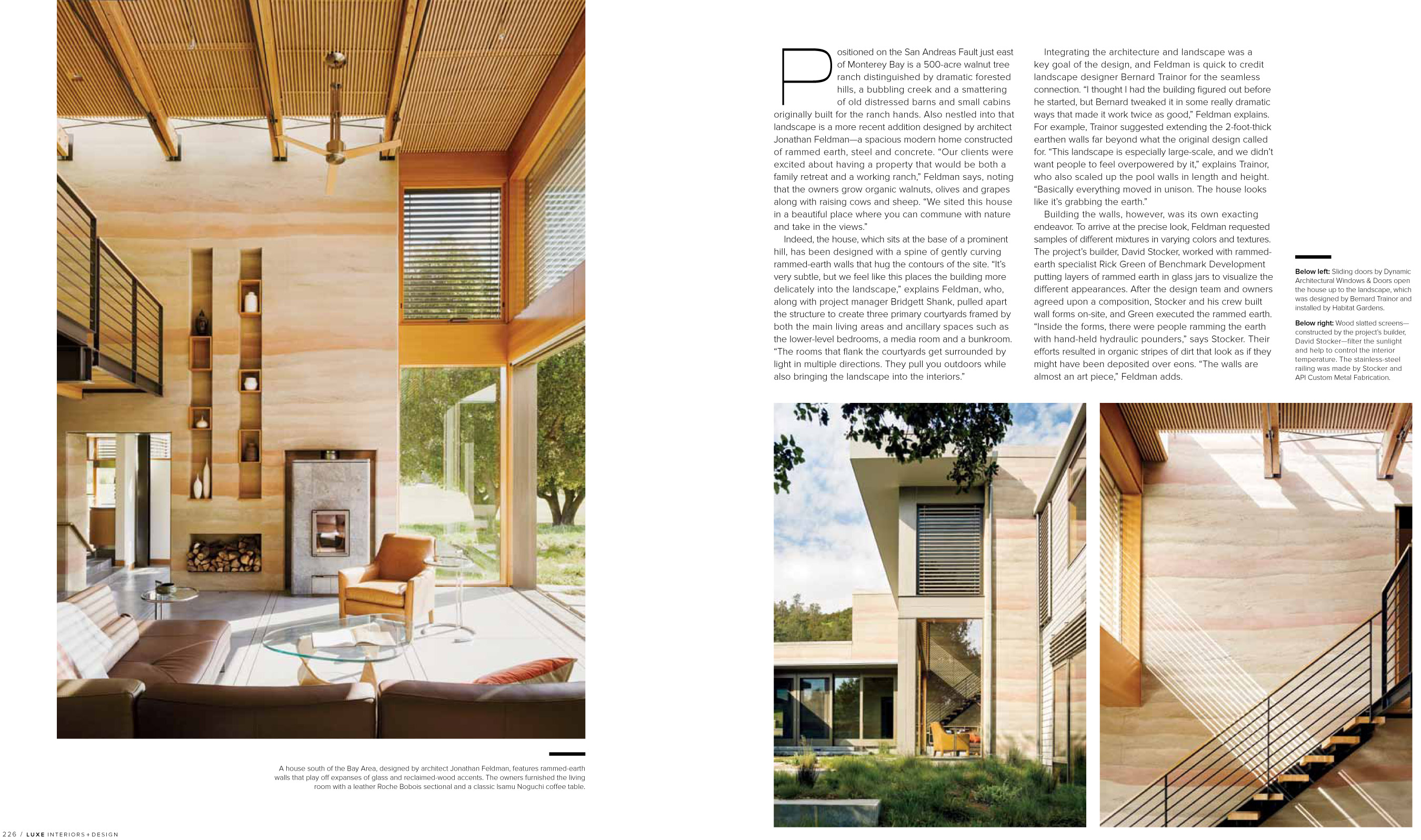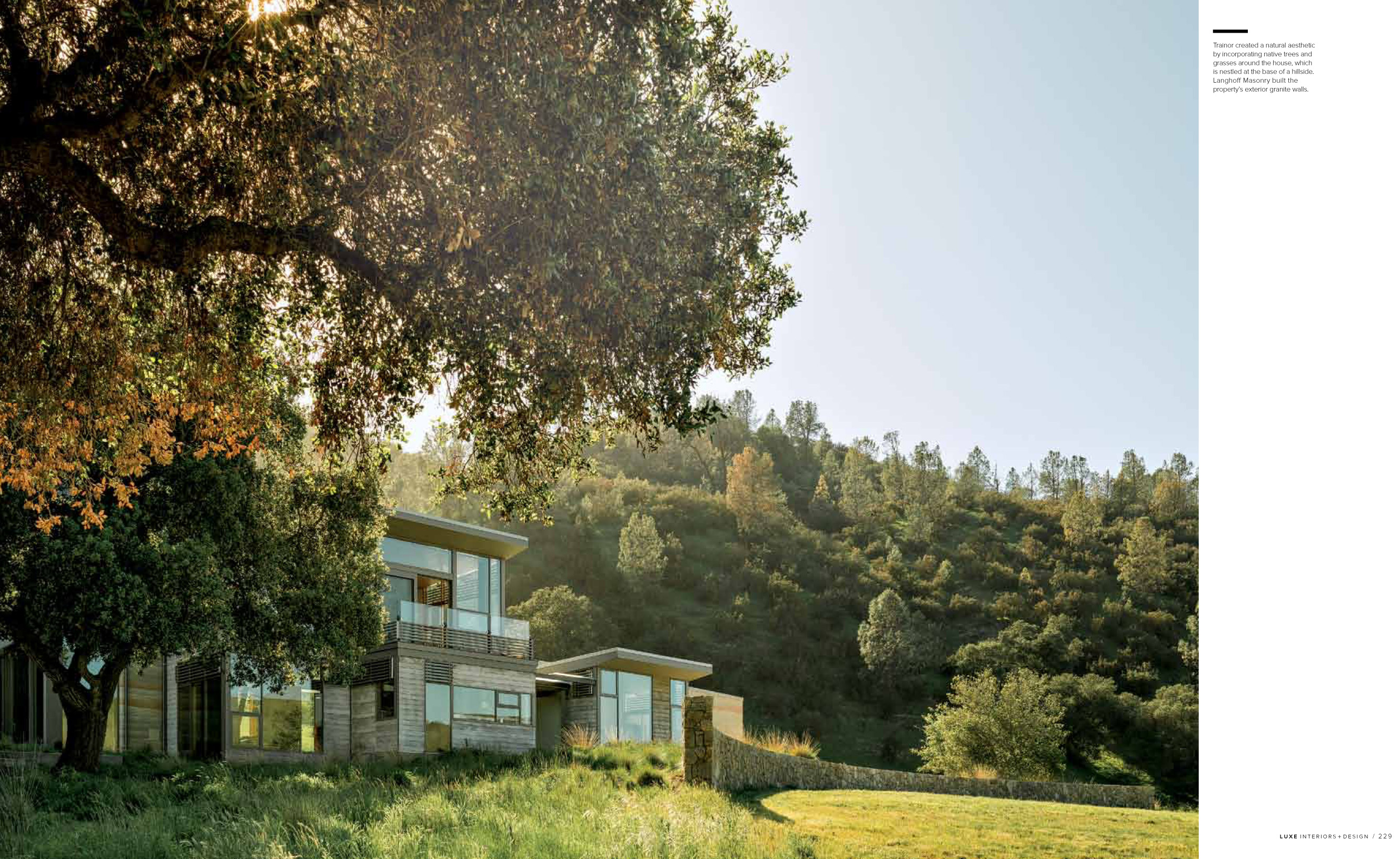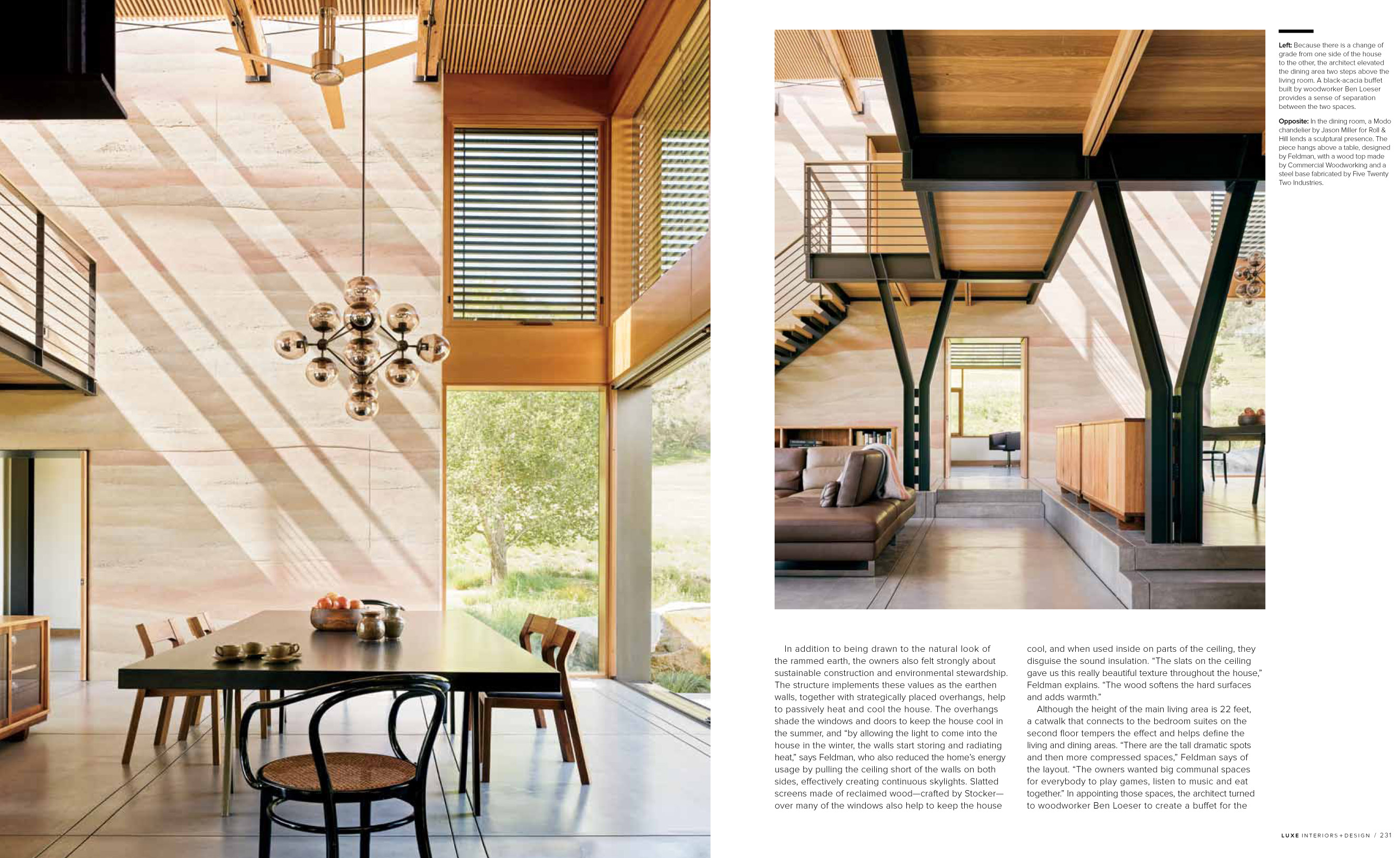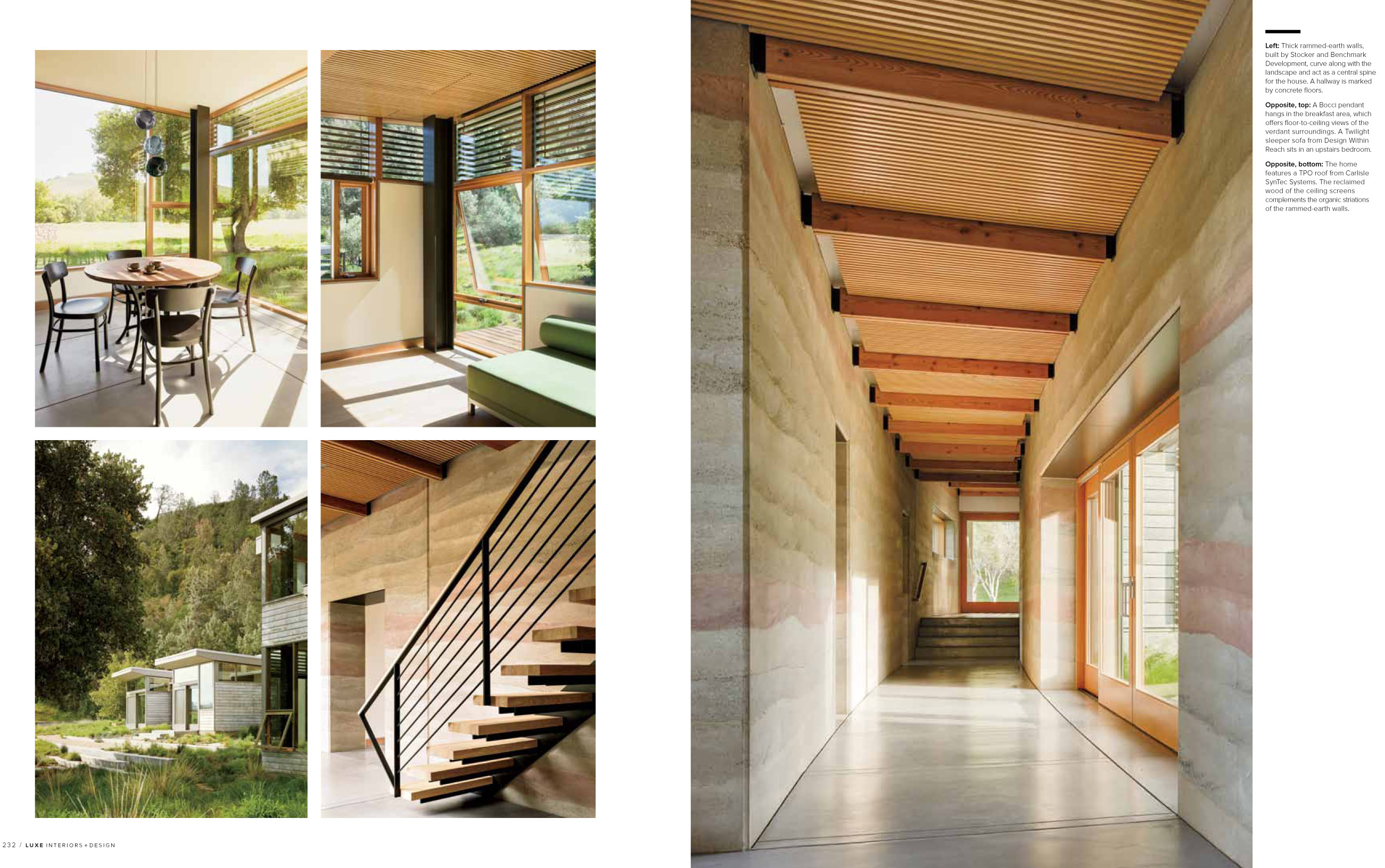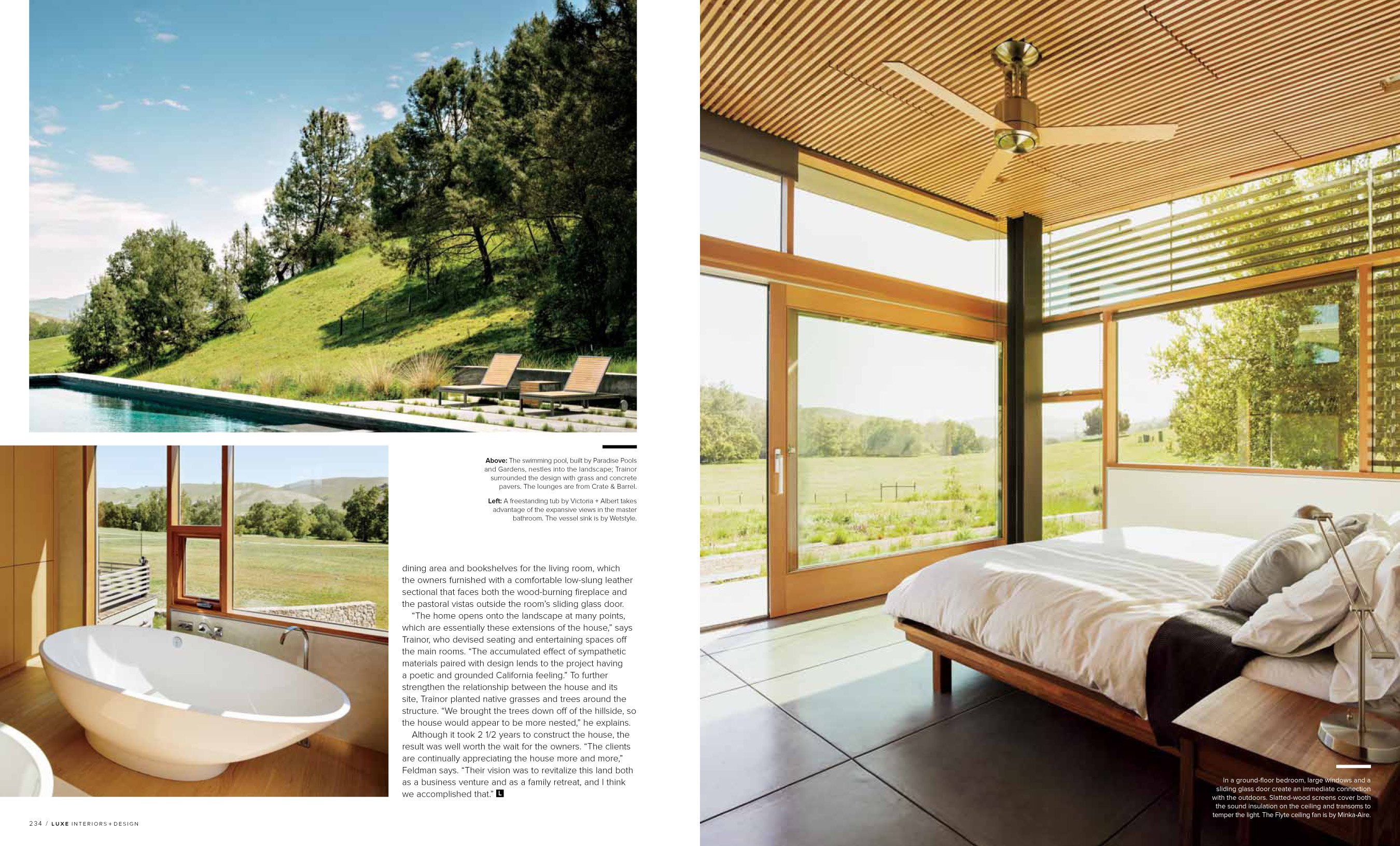Between the Lines
Positioned on the San Andreas Fault just east of Monterey Bay is a 500-acre walnut tree ranch distinguished by dramatic forested hills, a bubbling creek and a smattering of old distressed barns and small cabins originally built for the ranch hands. Also nestled into that landscape is a more recent addition designed by architect Jonathon Feldman–a spacious modern home constructed of rammed earth, steel and concrete. “Our clients were excited about having a property that was both a family retreat and a working ranch,” Feldman says, noting that the owners grow organic walnuts, olives and grapes along with raising cows and sheep. “We sited this house in a beautiful place where you can commune with nature and take in the views.”
Indeed, the house, which sits at the base of a prominent hill, has been designed with a spine of gently curving rammed-earth walls that hug the contours of the site. “It’s very subtle, but we feel like this places the building more delicately into the landscape,” explains Feldman, who, along with project manager Bridgett Shank, pulled apart the structure to create three primary courtyards framed by both the main living areas and ancillary spaces such as the lower-level bedrooms, a media room and a bunkroom. “The rooms that flank the courtyards get surrounded by light in multiple directions. They pull you outdoors while also bringing the landscape into the interiors.”
Integrating the architecture and landscape was a key goal of this design, and Feldman in quick to credit landscape designer Bernard Trainor for the seamless connection. “I thought I had the building figured out before he started, but Bernard tweaked it in some really dramatic ways that made it work twice as good,” Feldman explains. For example, Trainor suggested extending the 2-foot-thick earthen walls far beyond what the original design called for. “This landscape is especially large-scale, and we didn’t want people to feel overpowered by it,” explains Trainor, who also scaled up the pool walls in length and height. “Basically, everything moved in unison. The house looks like it’s grabbing the earth.”
Building the walls, however, was its own exacting endeavor. To arrive at the precise look, Feldman requested samples of different mixtures in varying colors and textures. The project’s builder, David Stocker, worked with rammed-earth specialist Rick Green of Benchmark Development putting layers of rammed-earth in glass jars to visualize the different appearances. After the design team and owners agreed upon a composition, Stocker and his crew built wall forms on-site and Green executed the rammed earth. “Inside the forms, there were people ramming the earth with hand-held hydraulic pounders,” says Stocker. Their efforts resulted in organic stripes of dirt that look as if they might have been deposited over eons. “The walls are almost an art piece,” Feldman adds.
In addition to being drawn to the natural look of the rammed earth, the owners also felt strongly about sustainable construction and environmental stewardship. The structure implements these values as the earthen walls, together with strategically placed overhangs, help to passively heat and cool the house. The overhangs shade the windows and doors to keep the house cool in the summer, and “by allowing the light to come into the house in the winter, the walls start storing and radiating heat,” says Feldman, who also reduced the homes energy usage by pulling ceiling short of the walls on both sides, effectively creating continuous skylights. Slatted screens made of reclaimed wood–crafted by Stocker¬–over many of the windows also help to keep the house cool, and when used inside on parts of the ceiling, they disguise the sounds insulation. “The slats on the ceiling gave us this really beautiful texture throughout the house,” Feldman explains. “The wood softens the hard surfaces and adds warmth.”
Although the height of the main living area is 22 feet, a catwalk that connects to the bedroom suites on the second floor tempers the effect and helps define the living and dining areas. “There are the tall dramatic spots and then more compressed spaces,” Feldman says of the layout. “The owners wanted big communal spaces for everybody to play games, listen to music and eat together.” In appointing those spaces, the architect turned to woodworker Ben Loeser to create a buffet for the dining area and bookshelves for the living room, which the owners furnished with comfortable low-slung leather sectional that faces both the wood-burning fireplace and the pastoral vistas outside the room’s sliding glass door.
“The home opens onto the landscape at many points, which are essentially these extensions of the house,” says Trainor, who devised seating and entertaining spaces off the main rooms. “The accumulated effect of sympathetic materials paired with design lends to the project having a poetic and grounded California feeling.” To further strengthen the relationship between the house and it’s site, Trainor planted native grasses and trees around the structure. “We brought trees down off the hillside, so the house will appear more nested,” he explains.
Although it took 2 ½ years to construct the house, the result was well worth the wait for the owners. “The clients are continually appreciating the house more and more,” Feldman says. “Their vision was to revitalize this land both as a business venture and as a family retreat, and I think we accomplished that.”

